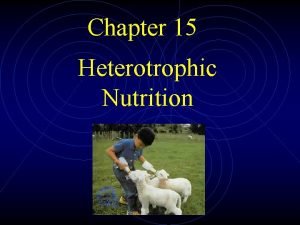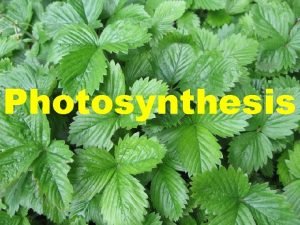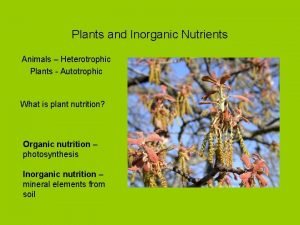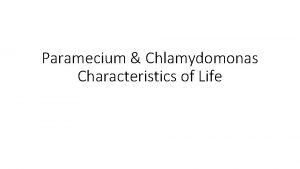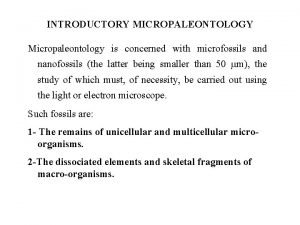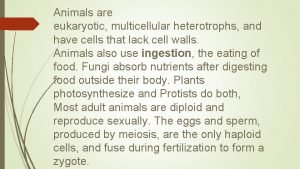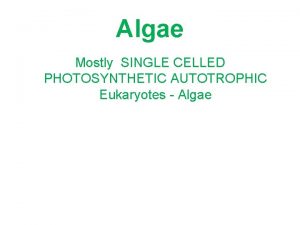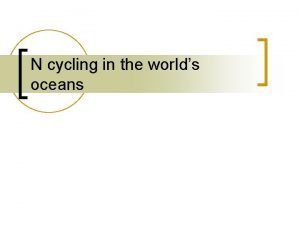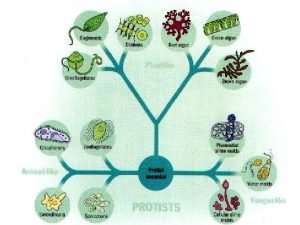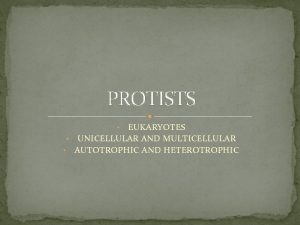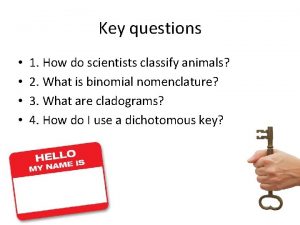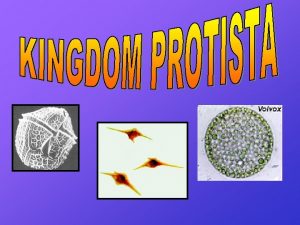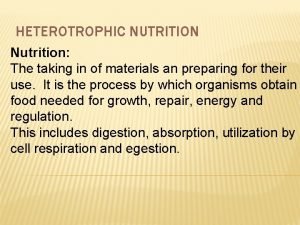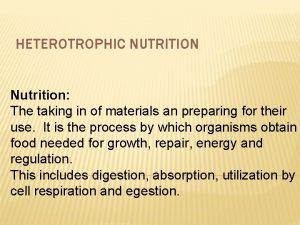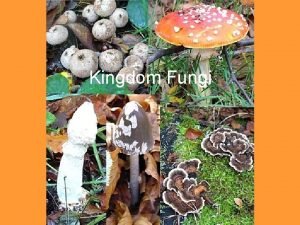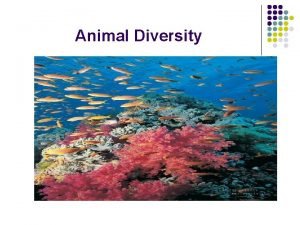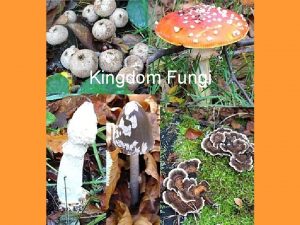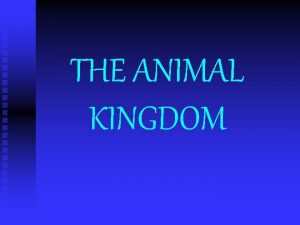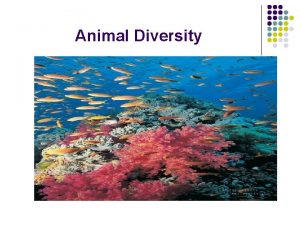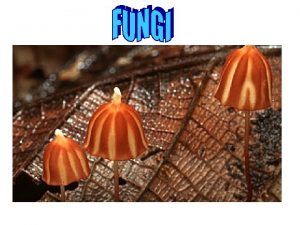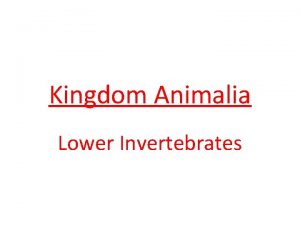Heterotrophic Nutrition I Characteristics of Heterotrophic Nutrition A














- Slides: 14

Heterotrophic Nutrition I. Characteristics of Heterotrophic Nutrition A. Heterotrophic nutrition is when organisms are unable to make organic molecules from inorganic raw materials Ex. fungi, bacteria, protozoans, animals B. Heterotrophs are organisms that need to obtain preformed organic molecules from their environment

II. Digestion A. In order for “food” molecules to enter cells they need to be small enough to cross the cell membrane. Digestion is the conversion of large insoluble molecules to small soluble molecules so that energy can be obtained. B. There are two ways in which food is broken down: 1. mechanical (digestion) is when food is broken down by physical means (grinding – teeth) 2. chemical digestion is when large organic molecules are changed chemically to small organic molecules by enzymatic hydrolysis (splitting of large molecules to small molecules with the addition of water)

Ex. Carbohydrates + H 2 O Lipids + H 2 O Proteins + H 2 O enzymes lipase protease monosaccharides 3 fatty acids + glycerol amino acids The end products (building blocks of organic molecules) are used by all organisms to obtain energy Ingestion – process of taking in food Egestion – removal of undigested food (not same as excretion)

III. Amoeba A. Amoeba move by pseudopods. They ingest food by the process of phagocytosis. Phagocytosis

The food vacuole fuses with a lysosome containing strong digestive enzymes for digestion to occur. Food is chemically digested to small molecules which diffuse across the food vacuole membrane into the cytoplasm. Food that is not digestible stays in the food vacuole until the vacuole membrane fuses with the cell membrane and the contents are expelled, this is called exocytosis.

Amoeba use a type of digestion called intracellular digestion. This means that the food is digested within a food vacuole located within a cell. https: //www. youtube. com/watch? v =pv. Oz 4 V 699 gk

IV. Fungi (bread mold) A. Fungi live in or on their food supply since they have no means of locomotion.

· Rhizoids anchor the bread mold and secrete digestive enzymes into the bread. · Hydrolysis occurs and the end products of digestion, monosaccharides are produced. · Rhizoids then absorb the end products back into cells of the bread mold. B. Fungi use a type of digestion called extracellular digestion. This means that the food is digested outside the cell and nutrients are absorbed back into the cell.

VI. Hydra A. Hydra is a multicellular organism that has a hollow body cavity. It has tentacles projecting from a mouth region. https: //www. youtube. com/watch? v =elnpe 5 u 4 RZ 0

B. Two types of cells line the gastrovascular cavity: 1. 2. One type secretes enzymes into the cavity to digest food. The other type is capable of phagocytosis of partially digested food in the gastrovascular cavity. C. The cells that secrete digestive enzymes are using extracellular digestion. D. The cells that phagocytize food are using intracellular digestion. E. Hydra uses both intracellular and extracellular digestion. F. Undigested food is egested through the same opening through which ingestion occurs (two-way traffic)

V. Earthworm The earthworm is a complex multicellular organism with 2 openings, a mouth and an anus. The digestive tract is a tube within the organism. The food travels in one direction in the earthworm.

A. Digestive system anatomy 1. mouth - takes in soil, dead leaves, decaying plant matter 2. pharynx – Pulls food into mouth, muscular 3. esophagus - passageway 4. crop - thin-walled storage chamber 5. gizzard - thick muscular walls, grind food by small stones and muscle action. The type of digestion that occurs in the gizzard of an earthworm is mechanical digestion.

6. intestine - chemical digestion occurs in the intestine. Cells lining the wall of the intestine secrete enzymes into the intestinal cavity. This is another example of extracellular digestion.

 Heterotrophic nutrition involves
Heterotrophic nutrition involves Heterotrophic mode of nutrition
Heterotrophic mode of nutrition Heterotrophic plants
Heterotrophic plants Encoled
Encoled Plasmodial slime mold vs cellular slime mold
Plasmodial slime mold vs cellular slime mold Classification of fungi
Classification of fungi Is a foraminifera heterotrophic or autotrophic
Is a foraminifera heterotrophic or autotrophic Flow of energy meaning
Flow of energy meaning All animals are multicellular heterotrophs
All animals are multicellular heterotrophs Spirogyra unicellular or multicellular
Spirogyra unicellular or multicellular Heterotrophic denitrification
Heterotrophic denitrification Sarcomastigophora are unicellular immotile parasites
Sarcomastigophora are unicellular immotile parasites Is protista autotrophic or heterotrophic
Is protista autotrophic or heterotrophic Are rotifers autotrophic or heterotrophic
Are rotifers autotrophic or heterotrophic Slime mold heterotrophic or autotrophic
Slime mold heterotrophic or autotrophic
